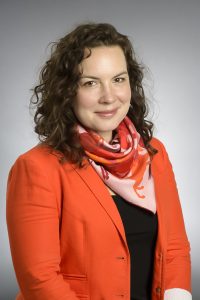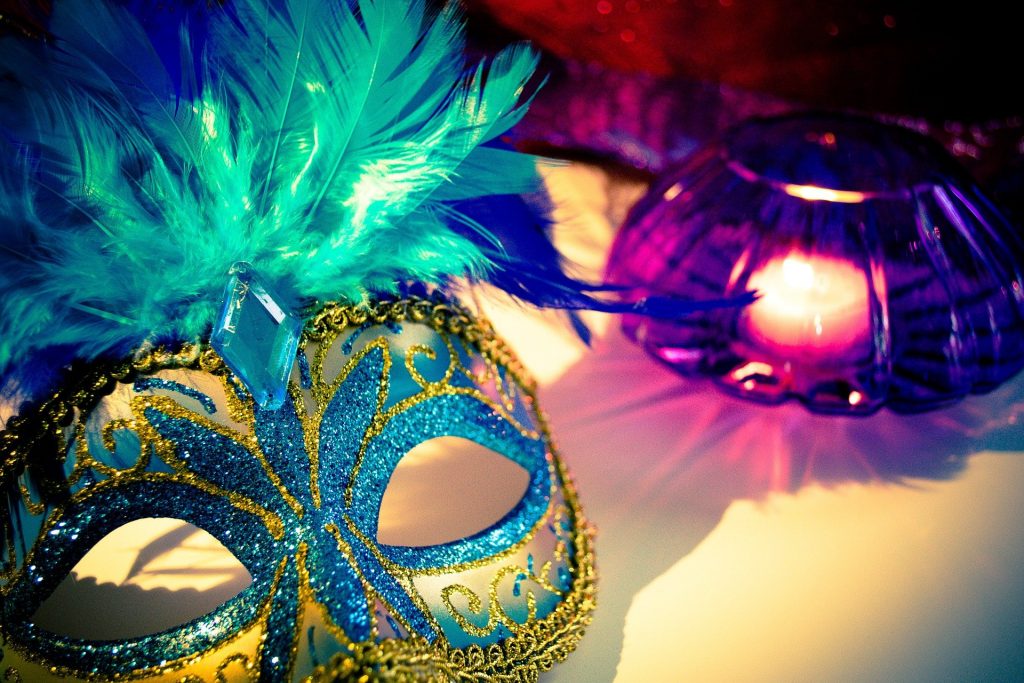
When Sara Schroeter set out to attend a local musical theatre production one evening, an outing with one of her children, she didn’t expect she would have to have difficult conversations with her family because of the problematic racial representations.
“As a mother of mixed-race children, when I started going to the musical theater and seeing the problematic representations and after talking with my husband and hearing him say the damage was already done, and that this was one of many, many experiences that our children will have, that they might not understand right now, but one day they will, and these experiences will have an accumulated impact [sigh]—that’s when I realized that this is what we are doing with musicals.”
Musical theatre is a popular and traditional feature in many high schools across North America, including Regina. When Schroeter first joined the Faculty of Education as an assistant professor of arts and drama education, she realized she needed to gain a better understanding of musical theatre:
“Musical theatre is what many of my students in Arts Ed understood theatre to be. I needed to better understand what’s going on in musical theatre. I was told that musicals are really big for the local high schools and the community attends these musical shows.”
Schroeter set out to investigate and says, “I went to two musical theatre productions the first year I was here and both had really problematic representations of either race or gender and sexuality—some of the most troubling representations that I have seen recently, certainly something I didn’t expect to see in 2016.”
Her experiences caused Schroeter to start questioning the pedagogical value of musical theatre. She wondered where teachers were drawing their inspiration from and how they were contending with issues of representation in a field that, she says, “is known to have quite a problematic history.”
In 2018, Schroeter’s wondering turned into a University of Regina, President’s Seed Funded research project entitled, “Staging Difference: Examining Representational Practices in Musical Theatre Productions in Regina Schools and on Professional Stages.”
Though a drama educator, this exploration into musical theatre has been a new focus for Schroeter, whose research has mostly focused on youth representations of self and other through drama.
“I study applied theatre and drama in education, and am interested in youth making their own stories and telling their own stories. My research has also examined representational practices, often drawing on critical race theory and cultural studies,” says Schroeter.
Schroeter’s research project involves two parts: “Part of my research is to look at what is going on in high schools, interviewing teachers, and part of it is to go and see contemporary progressive shows, or shows said to be doing progressive things.”
Though her research is not complete yet, and no in-depth analysis has been done on the data, Schroeter is able to share some of her understanding of the issues so far.
Musical theatre productions are essentially money makers, Schroeter says. As such, “they are meant to have an appeal to a large audience. To do this, they rely heavily on stereotypes and tropes to make easily recognizable characters so that everybody knows what story is being told. These representations always comes with issues.”
When musicals are purchased for reproduction at the high school level, as commercial enterprises, strictly guided by copyright law, there is little room for local teachers to make adaptations. This is a problem because, Schroeter says, there are “so many ways in which race, religion, and gender and heteronormativity are written into the productions as a way of telling a particular story about how Americans see themselves and the image they want to portray in American society.”
Summarizing Hoffman (2014) in The Great White Way, Schroeter says, “the musical is in essence part and parcel of the invention of Americanism and white supremacy, with roots in minstrel shows from the 1800s and early 1900s when performers did dress up with blackface, and used quintessential stereotypes, such as mammy.”
As a form of public pedagogy, Schroeter views high school musical theatre as “teaching all of those things that make up what we are understanding and learning—how we construct knowledge.” Referencing Donatella Galella’s work, Schroeter says that “musical theatre is a form of public pedagogy because it tells us stories about who we are and who we imagine ourselves to be.”
As an example, Schroeter points to Hamilton (2015), which is purported to be a very progressive musical production. She says, “Hoffman (2014) writes about songs in musicals, such as the song for change. The main character goes through immense change and the person who sings the song for change is usually a white character who has multiple dimensions, whereas characters of colour are presented as flat characters; they stay the same throughout the show. Hamilton (2015) plays with this by representing white characters through actors of colour. Actors of colour get to play this range of emotion and change, but it is still problematic because they are still representing White folks, so they haven’t changed and disrupted what happens in the structure of the musical.”
Schroeter highlights other problems with Hamilton (2015): “The way the American history is told through hip hop makes history relevant, but it also makes the history irrelevant, because it is a story from which the actors of colour in the cast have historically been excluded—in some ways a re-appropriation. Why aren’t they telling the story of the Haitian revolution or of the theft of lands; there are so many others stories that could have been told that would be relevant to the students who would then see their histories represented in the play. Instead they are being told what is ultimately a white story—a slave-owning story—that has been re-imagined to maybe include the possibility of mixed heritage in Alexander Hamilton, which perpetuates the idea that he was mixed race, but we don’t know that.”
Though musical theatre is problematic, Schroeter understands that it fulfills a purpose: “The musical fills this void in not requiring audiences to work very hard to understand what is going on in the story,” she says. Musicals also “bring various departments, music, dance, theatre, and art departments together for these wide scale productions that involve a lot of kids.”
Schroeter clarifies her position saying, “I’m not taking away from the bonding experience or artistic learning, but I want to know what these productions do to us as a public, pedagogically, and to students in particular, and also to acknowledge, as Gastambide-Fernandez & Parekh found in their 2017 study of arts programs, who is included in those productions and who is excluded historically in drama and theatre programs in our schools.” Schroeter is encouraged that increasingly IBPOC scholars, educators, and artists are raising their voices about this exclusion in representation and taking on leadership roles in musical theatre, such as director and producer.
Schroeter still wants to see plays integrate music and art with drama, but she would love to see them be stories relevant to youth. “I’m not going to deny that kids want to do Grease (1971). I get that teachers are in a delicate position of having to do what kids want and push them.”
Avant garde theatre is one alternative to musicals because “avant garde theatre artists are often trying to avoid stereotypes or trouble the tropes. Then you get really controversial theatre because opinion is divided—with some hating and some loving it,” says Schroeter. Likewise, “when you make original theatre and stories told by students and their points of views, sometimes parents don’t like the stories that kids have to tell and sometimes the stories are experimental and people don’t get it.”
Through interviews with local drama teachers, Schroeter is finding some teachers “that just won’t do the musical because they are going to create plays that involve music and singing, but not musicals—once you open that door, you can’t close it because that is what people will want and expect.” With student-created theatre, Schroeter says, “you can cast more diversely, and the tools you are giving students are much bigger because you are training them as story tellers.” Other teachers in her study, she says, “are aware of the issues, and are trying to address stereotyping and problematic representational practices by having conversations with their students about it and by not letting the problems disappear.”
So far, Schroeter says, “my research is reinforcing what I already know about the value of arts education—giving students the tools to come together and make and create original art.”
Follow us on social media